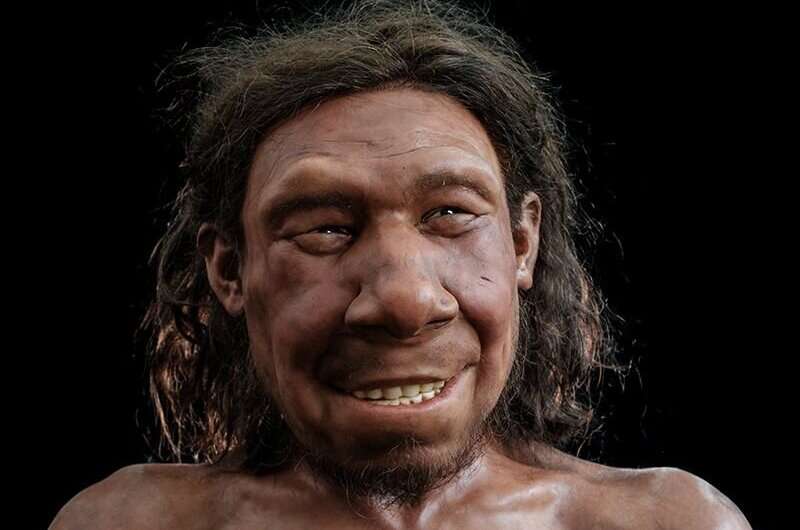September 15, 2021 report
Putting a face to Krijn, the Netherland's oldest Neanderthal man

A group of paleo-anthropological artists at Kennis & Kennis Reconstructions have put their skills to good use—reconstructing the face of Krijn, the earliest known Neanderthal living in what was once Doggerland. The results have been included in Rijksmuseum van Oudheden, a Dutch national museum dedicated to exhibiting material from the antiquities.
Krijn is special for another reason. He is the first hominin from the Pleistocene ever found under seawater. A fragment of his skull that included parts of his brow was found in material sucked from the bottom of the North Sea off the coast of the Netherlands in 2001 in an area that was once part of Doggerland. Prior study of the skull fragment showed that Krijn lived approximately 50,000 to 70,000 years ago. Researchers also found that he fed mostly on meat, though he did also eat seafood on occasion. He has been described as likely having a strong, sturdy build, typical of a young male Neanderthal.
Doggerland is the name of an area now under the North Sea that once connected Great Britain to the European continent. Due to colder global temperatures, the ocean level was approximately 50 meters lower than today. In addition to hosting Neanderthal, the area was also home to creatures such as reindeer, mammoths and wooly rhinoceroses.
In this new effort, the modelers (the same group that reconstructed Ötzi the Iceman) set themselves the goal of recreating the face of Krijn as faithfully as possible. To that end, they began with his skull fragment with an unusual feature—a small dimple just above the raised brow—evidence of a benign tumor under the skin. The team then used collections of other Neanderthal fossils to help render the face in clay. Once the likeness was complete, they used their past experience modeling Neanderthal specimens to add other features, such as hair, skin tone and eye color. They also chose to give the bust character by portraying Krijn as a happy, young male Neanderthal with a broad smile.
The bust created by the team at Kennis & Kennis is now on display at Rijksmuseum van Oudheden, along with the skull fragment.
More information: www.rmo.nl/en/news-press/news/ … thal-now-has-a-face/
© 2021 Science X Network


















